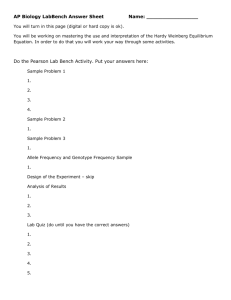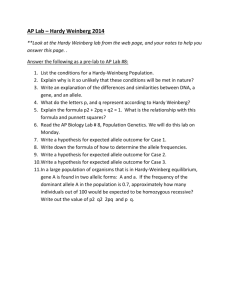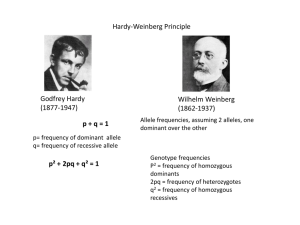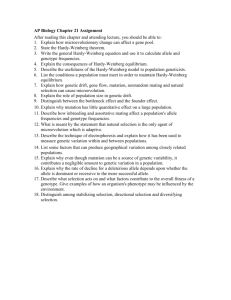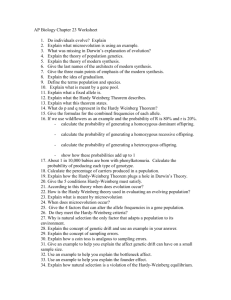D.4 - Hardy-Weinberg Principle
advertisement
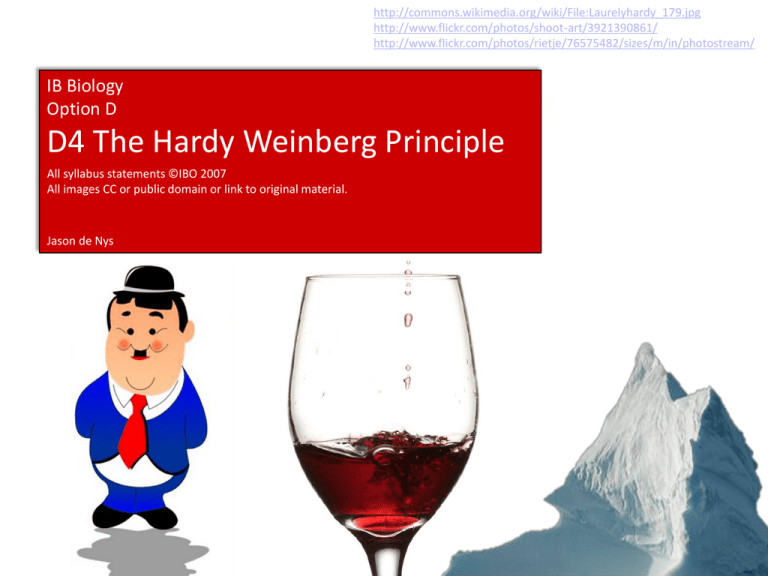
http://commons.wikimedia.org/wiki/File:Laurelyhardy_179.jpg http://www.flickr.com/photos/shoot-art/3921390861/ http://www.flickr.com/photos/rietje/76575482/sizes/m/in/photostream/ IB Biology Option D D4 The Hardy Weinberg Principle All syllabus statements ©IBO 2007 All images CC or public domain or link to original material. Jason de Nys D4.1 Explain how the Hardy-Weinberg equation is derived The Hardy–Weinberg principle states that both allele and genotype frequencies in a population remain constant —that is, they are in equilibrium—from generation to generation unless specific disturbing influences are introduced. Wikipedia http://www.flickr.com/photos/west-park/2610430399/ Consider two alleles A and a A has a frequency of p a has a frequency of q Therefore p + q = 1 As the two alleles are the only options at that locus Lets make a Punnet square: http://en.wikipedia.org/wiki/Hardy%E2%80%93Weinberg_principle http://commons.wikimedia.org/wiki/File:Hardy-Weinberg.svg An interactive that charts the changes in frequency and represents them as areas: D4.2 Calculate allele, genotype and phenotype frequencies for two allelles of a gene, using the Hardy-Weinberg equation Online practise questions And more practise D4.3 State the assumptions made when the Hardy Weinberg equations is used Okay, so if: “both allele and genotype frequencies in a population remain constant—that is, they are in equilibrium—from generation to generation” What must be the underlying assumptions? Basic Assumptions of the Hardy-Weinberg Principle - All phenotypes equal fitness, no natural selection - No mutation - No immigration or emigration - No genetic drift (infinitely large population) - No assortative mating Of course, at least one of these factors will be acting on a population in the wild For the equation to work mathematically: - The organism involved must be diploid and reproduce sexually - Generations must not overlap - The trait must be autosomal Further information: Good video Also revises directional selection: Online Quiz
